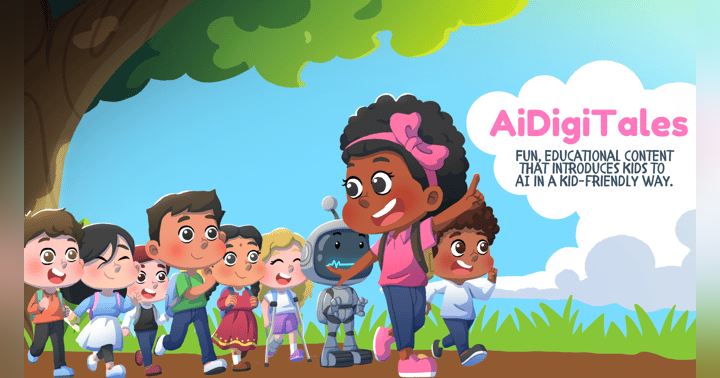Breaking Barriers in Education with Adobe Podcast! A Conversation with Harmony Jiroudek

In today’s digital age, podcasting is more than just a platform for entertainment—it’s a powerful tool for education. Whether it’s students exploring storytelling or teachers making learning more engaging, podcasting has carved out a special place in classrooms. And now, with Adobe Podcast, creating high-quality audio has never been easier.
I had the chance to sit down with Harmony Jiroudek, who leads Customer Education and Success at Adobe Podcast, and let me tell you—this conversation was packed with insights that educators need to hear. We talked about the platform’s evolution, how it’s breaking down barriers for content creators and educators, and why podcasting in the classroom is a game-changer.
The Magic of Adobe Podcast: Simple, Yet Powerful
One of the biggest hurdles for educators looking to integrate podcasting into their classrooms is technology overwhelm. Let’s be real—not every teacher wants to spend hours learning complicated audio editing software. That’s where Adobe Podcast comes in. Harmony explained that the platform was designed to eliminate those barriers, making professional-quality audio accessible to anyone—even if you’ve never touched an audio editor before.
With AI-powered features like enhanced speech, remote recording, and text-based editing, teachers and students can focus on content rather than tech frustrations. Imagine recording a discussion on a Chromebook, automatically cleaning up background noise, and editing the transcript just like a Google Doc—yes, it’s that simple.
Podcasting in the Classroom: More Than Just a Trend
So, why should educators care about podcasting? Because it engages students in ways that traditional assignments don’t. Harmony and I discussed some incredible ways that teachers are using Adobe Podcast to amplify learning:
Book Reviews & Digital Storytelling – Students can voice their reflections on novels, exploring themes and character development in a fresh way.
Language Learning & Fluency Practice – With multi-language transcription, students can record themselves speaking, analyze their pronunciation, and track progress over time. This is a game-changer for ESL learners.
Cross-Curricular Podcasting Projects – Whether it’s a science explainer, a historical debate, or a math problem breakdown, podcasting helps students communicate their understanding while building confidence in public speaking.
Student-Led Journalism & School News – Imagine a student-run school podcast covering campus events, interviews with teachers, and local news. It’s a real-world learning experience that builds collaboration and media literacy.
Removing Barriers, Boosting Creativity
One of my favorite moments in our conversation was when we talked about how accessible Adobe Podcast makes audio creation. In many schools, podcasting has been reserved for those with access to expensive microphones and software. Now, students can record directly from their Chromebooks and edit without needing any prior experience.
Another standout feature? The text-based editing tool. If students want to clean up their recording, they don’t need to mess with waveforms—they can edit audio like a text document. Cut out “ums” and pauses with a simple highlight-and-delete. This means students spend more time refining their message and less time fighting the tech.
What’s Next for Adobe Podcast?
Harmony gave us a sneak peek into what’s coming, and I can tell you—the future of Adobe Podcast is bright.
More languages for transcription and editing? Yes, please! More customization options for audiograms? Sign me up!
Adobe Podcast isn’t just staying in the game—it’s evolving to meet the needs of educators and creators alike.
Ready to Try Adobe Podcast?
If you’re an educator, this is your sign to jump into podcasting. Your students already love creating content—why not harness that excitement for learning? Adobe Podcast makes it simple, accessible, and fun to bring podcasting into the classroom.
Give it a try at podcast.adobe.com and see how easy it is to get started!
And as always, keep creating, keep innovating, and stay techie!










